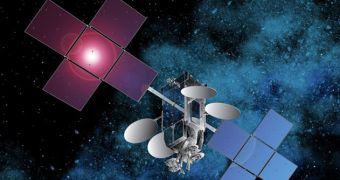According to officials at HughesNet, the company plans to launch a new and advanced satellites into orbit in 2012, a spacecraft that would allow for broadband Internet to receive an amazing boost in performance.
As one of the nation's two major providers of online access, the corporation is always on the lookout for innovation that could speed its services up even further. This is why it has invested heavily in the next-generation spacecraft for this very purpose.
At this point, the company operates the dedicated Spaceway satellite, which is capable of handling current requested from various types of users. The spacecraft that will launch in 2012, called Jupiter, will be able to provide a potential download rate of 20 megabits per second (mbps).
HughesNet has yet to announce speed and subscription prices, or anything of that sort, but officials with the company have said that the improvement from the previous satellites to the new one will be clearly apparent to everyone.
The corporation also announced that users can expect to pay similar fees for the new system as they did for the old one. Granted, prices will probably increase to some extent, but not in a prohibitive manner.
It is currently estimated that around 10 million Americans don't have access to high-speed Internet, as defined by a connection capable of supporting a transfer rate larger than 356 kilobits per second.
According to the US Federal Communications Commission (FCC), high-speed Internet is defined as a connection that supports 4mbps download speed and 1 mbps uploads.
The main battle between HughesNet and its main competitor WildBlue will be fought in rural America, where there is no other option for connecting to the Internet other than old-school dial-up.
These connections are however painfully slow, and many people have had it with them. Whoever can provide alternative, low-cost, high-speed solutions for this sector of the population stands to make a lot of money, and to assure its supremacy on this market.
These regions are “where we really fit the bill. These households range from very, very rural areas to areas that are under-served in the sense that they live just beyond the reach of land-based alternatives,” says official Peter Gulla.
He holds an appointment as the vice president of the Hughes Network Systems LLC North American division, headquartered in Germantown, Maryland.
The $58.7 million the company got in 2009 stimulus funds are “basically a validation that there are areas of the country where satellite is the best solution,” Gulla says.
“There are plenty of unserved customers still out there,” he adds, quoted by Tech News Daily.

 14 DAY TRIAL //
14 DAY TRIAL //